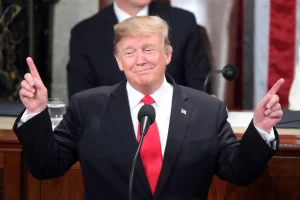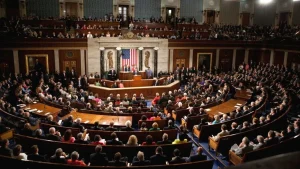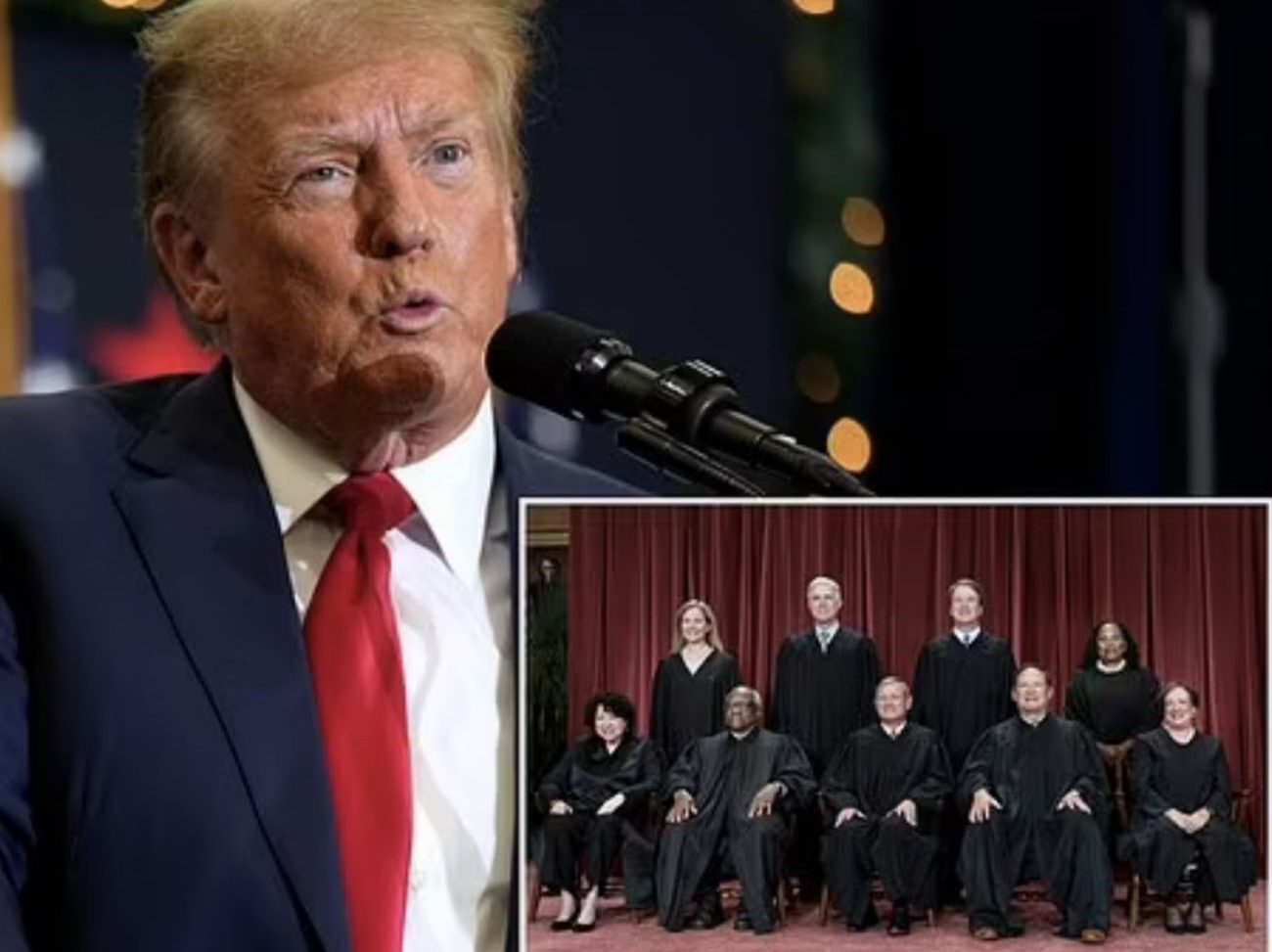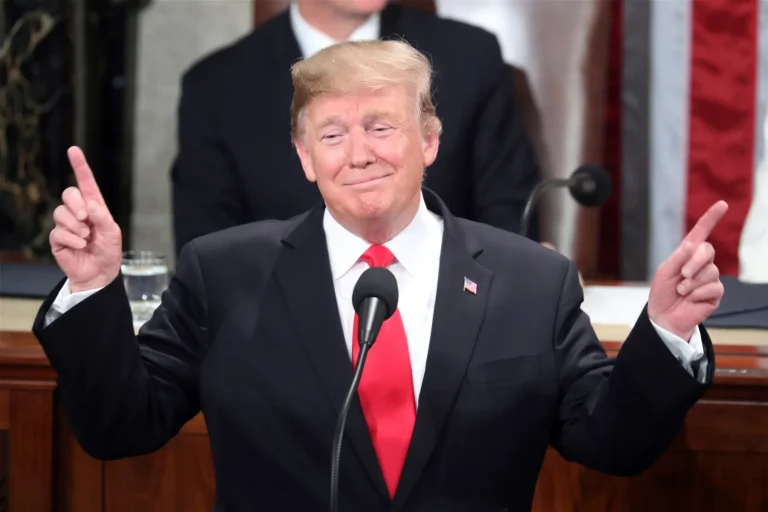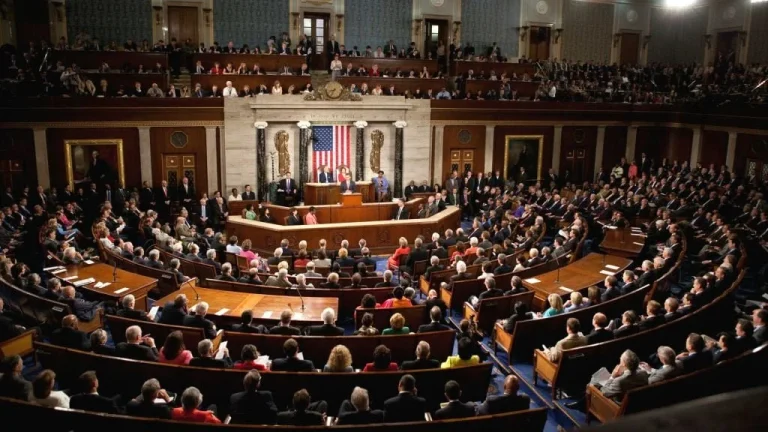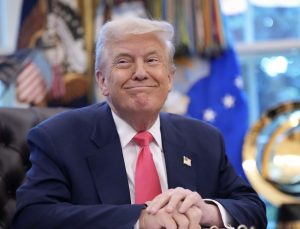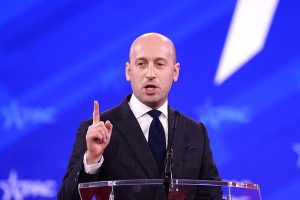In a significant ruling that could reshape the balance of power between the White House and independent federal agencies, the Supreme Court on Wednesday granted President Donald Trump authority to remove three Democratic appointees from the Consumer Product Safety Commission (CPSC) — marking the second time this year the justices have sided with him on the issue of presidential control over executive branch personnel.
The decision, issued in an unsigned emergency order, temporarily overturns a lower court’s ruling that had blocked the removals and reinstated Commissioners Mary Boyle, Alexander Hoehn-Saric, and Richard Trumka Jr., all of whom were appointed by former President Joe Biden.
By lifting that order, the Supreme Court handed Trump another legal victory in his ongoing effort to reclaim presidential removal powers that have been limited for decades by statutory “for-cause” protections — rules designed to insulate certain independent agencies from direct political interference.
Trump’s Expanding Executive Authority
The administration celebrated the decision as a major step in restoring executive control over the sprawling federal bureaucracy. Legal experts say it signals the Court’s willingness to revisit, and potentially overturn, the 1935 precedent of Humphrey’s Executor v. United States, which first established that Congress could protect independent agency heads from being dismissed at will by the president.
In recent months, Trump’s legal team has made a concerted push to challenge those limitations across several agencies, arguing that presidents must have full authority to manage and replace officials who carry out federal law.
“The president cannot be expected to faithfully execute the laws if he cannot choose who executes them,” Solicitor General D. John Sauer argued in his brief to the Court.
Sauer accused some lower courts of “defying” the Supreme Court’s earlier guidance by continuing to block Trump’s dismissals of independent agency officials, citing a May decision in which the Court permitted Trump to remove members of the National Labor Relations Board (NLRB) and the Merit Systems Protection Board (MSPB).
What the Court Said
In Wednesday’s brief order, the justices referenced that earlier case, noting that the CPSC’s structure “does not differ in any pertinent respect” from the agencies involved in the May ruling.
“Although our interim orders are not conclusive as to the merits, they inform how a court should exercise its equitable discretion in like cases,” the Court wrote.
The emergency decision allows the Trump administration to proceed with the firings while litigation continues in lower courts.
The Dissent
The Court’s three liberal justices — Elena Kagan, Sonia Sotomayor, and Ketanji Brown Jackson — dissented sharply, warning that the ruling undermines Congress’s longstanding intent to maintain bipartisan and independent oversight at regulatory commissions.
“By means of such actions, this Court may facilitate the permanent transfer of authority, piece by piece by piece, from one branch of Government to another,” Kagan wrote. “Respectfully, I dissent.”
The dissenting justices cautioned that if the Court continues to erode statutory protections for agency officials, future presidents — of any party — could exercise unchecked control over regulatory decisions meant to remain nonpartisan.
Broader Implications
Legal analysts say the case is about far more than just three commissioners. It could serve as a testing ground for whether the Supreme Court is prepared to revisit Humphrey’s Executor, a ruling that has guided administrative law for nearly 90 years.
That 1935 case upheld President Franklin Roosevelt’s decision to remove a Federal Trade Commission member but also allowed Congress to impose certain conditions on such removals — effectively creating the concept of “independent” agencies that operate outside the president’s direct supervision.
For decades, both Republican and Democratic administrations have accepted that some agencies — including the SEC, FCC, and CPSC — function with a degree of autonomy to prevent partisan influence. Trump, however, has argued that those restrictions are unconstitutional and inconsistent with Article II of the U.S. Constitution, which vests executive power solely in the president.
“This is about accountability,” one White House official said Wednesday. “Voters elect the president to implement policy. He cannot do that if bureaucrats appointed by political opponents have the power to block him.”
Inside the Legal Battle
The CPSC commissioners, represented by the consumer advocacy group Public Citizen, urged the justices to stay out of the matter, warning that removing them without cause would set a dangerous precedent.
“The government now asks this Court to disrupt the status quo and prevent the Commissioners from serving in roles they are entitled to occupy,” attorneys for the group wrote in their filing. “The government cannot establish entitlement to this extraordinary relief.”
The commissioners maintained that under the law, they can only be removed for “neglect of duty or malfeasance in office,” not for policy disagreements.
However, the Court’s conservative majority appeared unpersuaded — emphasizing in previous decisions that the president’s constitutional duty to execute the laws supersedes statutory limits that prevent him from replacing executive officials.
Kavanaugh’s Concurring View
Justice Brett Kavanaugh, one of Trump’s two appointees to the Court, wrote separately to argue that the justices should go even further by taking up the CPSC case in full and resolving the broader question of removal authority once and for all.
“When the question is whether to narrow or overrule one of this Court’s precedents rather than how to resolve an open or disputed question of federal law, further percolation in the lower courts is not particularly useful,” Kavanaugh wrote.
He warned that by delaying a definitive ruling, the Court risked creating “extended uncertainty and confusion” over the scope of presidential power.
A Broader Pattern
Wednesday’s order follows the Court’s May decision upholding Trump’s removal of Democratic members from the National Labor Relations Board and Merit Systems Protection Board — both of which, like the CPSC, are structured as independent commissions with bipartisan membership requirements.
Together, the rulings represent a broader effort to clarify how far presidential authority extends across the federal government’s many semi-autonomous bodies.
Trump’s legal team has made no secret of its intention to dismantle what it calls the “administrative state,” a network of agencies that have accumulated regulatory power over decades. Supporters of the president’s position argue that such agencies wield too much unelected authority, while critics say eliminating their independence could politicize everything from environmental oversight to consumer safety enforcement.
Reaction from Legal Scholars
Constitutional experts are split over the ruling’s long-term implications.
“This decision could dramatically expand presidential control over independent agencies,” said Professor Linda Devlin, a constitutional law scholar at Georgetown University. “It’s the latest signal that the Court is ready to reexamine decades of precedent in administrative law.”
Others, however, argue that restoring presidential removal power enhances democratic accountability. “At least voters know who to blame,” said Mark Caldwell, a former Justice Department attorney. “When agencies act independently, accountability is lost in a maze of unelected officials.”
What Comes Next
The case now returns to a federal appeals court, where Trump’s legal team is expected to argue that statutory limits on removal authority are unconstitutional in their entirety. If that argument succeeds, it could permanently change how presidents — current and future — manage the executive branch.
Legal observers say the CPSC dispute could become the case that finally forces the Supreme Court to address whether Humphrey’s Executor remains valid precedent in modern governance.
For now, the ruling gives Trump a major victory in his second term, bolstering his ongoing campaign to reassert presidential control over the federal bureaucracy.
As Justice Kagan noted in dissent, however, the consequences could extend far beyond the current administration. “The Court’s actions today may alter the fundamental structure of our government,” she wrote. “And once that shift occurs, it may not easily be undone.

James Jenkins is a celebrated Pulitzer Prize-winning author whose work has reshaped the way readers think about social justice and human rights in America. Raised in Atlanta, Georgia, James grew up in a community that instilled in him both resilience and a strong sense of responsibility toward others. After studying political science and creative writing at Howard University, he worked as a journalist covering civil rights issues before dedicating himself fully to fiction. His novels are known for their sharp, empathetic portraits of marginalized communities and for weaving personal stories with broader political realities. Jenkins’s breakout novel, Shadows of Freedom, won national acclaim for its unflinching look at systemic inequality, while his more recent works explore themes of identity, resilience, and the fight for dignity in the face of oppression. Beyond his novels, James is an active public speaker, lecturing at universities and participating in nonprofit initiatives that support literacy and community empowerment. He believes that storytelling is a way to preserve history and inspire change. When not writing, James enjoys jazz music, mentoring young writers, and traveling with his family to explore cultures and stories around the world.


